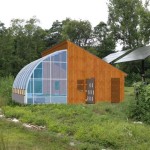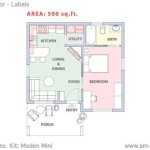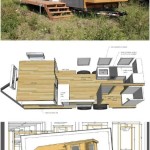House Site Plan: A Foundation for Your Dream Home
A house site plan is a crucial document that lays the groundwork for your dream home. It serves as a blueprint for your property, outlining the placement of your house, landscaping, utilities, and other key features. Understanding the elements and importance of a house site plan is essential for homeowners and anyone involved in the construction process. This article delves into the key components of a house site plan, highlighting its significance in achieving a functional and aesthetically pleasing living space.
1. Defining the Site: Boundaries and Topography
The first step in developing a house site plan is defining the boundaries of your property. This involves identifying the legal property lines, which are typically marked by stakes or other physical indicators. Understanding the shape and size of your lot is essential for determining the placement of your house and other features. The site plan should also clearly illustrate the topography of your land. This includes any slopes, hills, or depressions, which will influence the design and construction of your home.
Topographical information helps determine the best location for the house, taking into account factors like drainage, foundation requirements, and sunlight exposure. Accurate representation of the terrain helps in avoiding potential issues like flooding, erosion, or foundation instability. Furthermore, it guides the placement of driveways, walkways, and other landscaping elements, ensuring seamless integration with the natural surroundings.
2. House Placement and Design
The house site plan plays a critical role in determining the optimal placement of your house on the lot. This crucial decision involves considering factors like views, sunlight exposure, privacy, and proximity to utilities. The plan should showcase the proposed footprint of your home, including its dimensions, orientation, and relationship to the surrounding property. The angle of the sun is crucial for maximizing natural light and reducing energy consumption. Proper placement can also maximize outdoor living spaces, ensuring a harmonious relationship between indoor and outdoor living.
Beyond placement, the house site plan integrates the architectural design of the house with the site. This involves ensuring the structure aligns with setback requirements, building codes, and aesthetic considerations. The plan should reflect the desired style and character of the home, taking into account its scale, materials, and architectural features. It should also consider the potential impact on the surrounding environment and maintain a cohesive visual aesthetic.
3. Essential Features and Considerations
The house site plan goes beyond the house itself, encompassing other key features that contribute to a functional and enjoyable living environment. These include:
- Driveways and Parking: The plan should clearly illustrate the location of driveways, parking areas, and any required landscaping features. This ensures convenient access and parking for residents and guests while maintaining a visually appealing approach to the house.
- Walkways and Patios: Strategically placed walkways and patios connect the house to different areas of the property, offering inviting paths for movement and outdoor enjoyment. The site plan should consider the flow of pedestrian traffic and incorporate safety features where necessary.
- Utilities: The plan should identify the location of existing and proposed utilities, such as water, sewer, gas, and electrical lines. This ensures proper placement and connection of services while minimizing potential conflicts and disruptions.
- Landscaping: The house site plan should incorporate landscaping features that enhance the aesthetic appeal and functionality of the property. This may include trees, shrubs, lawns, and other elements that provide shade, privacy, enhance curb appeal, and create a harmonious blend with the surrounding environment.
The house site plan is a dynamic document that can be adjusted based on various factors. It is crucial to involve professionals like architects, engineers, and landscape designers who can provide expert guidance and ensure the plan aligns with your specific needs and site conditions. This comprehensive approach ensures a successful construction project that meets your vision and maximizes the potential of your property.

Site Plans What They Are And How To Create One

Residential Site Plans What To Include And How Draw Them Cedreo

Site Plans What They Are And How To Create One

Site Plans What They Are And How To Create One

Residential Site Plans What To Include And How Draw Them Cedreo

House Location Exterior Of A Site Plan Image Visual Dictionary

Home Project Series Site Plan

Importance Of A House Plan Site Layout

Site Plans What They Are And How To Create One

Home Project Series Site Plan








